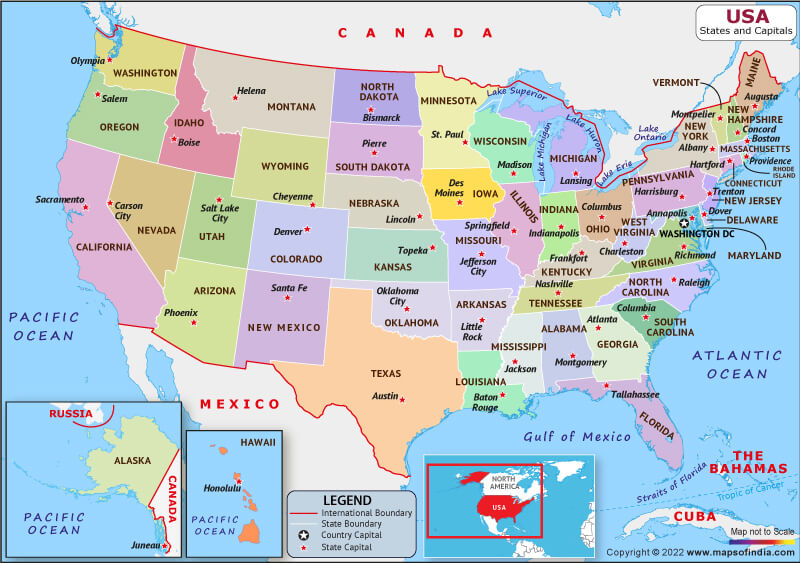
Alright, let’s get real about what truly makes a state a great place to live and work. In today’s competitive landscape, where skilled employees are a precious commodity, companies are seriously looking at the quality of life a state offers when deciding where to set up shop. It’s not just about tax breaks or infrastructure; it’s about whether a state can attract and retain the talent that drives innovation and growth.
That’s where CNBC’s annual ‘America’s Top States for Business’ study comes in, diving deep into ten categories of competitiveness. A significant chunk of that evaluation, 13% to be exact, is dedicated solely to Quality of Life. This isn’t just some fluffy category; it encompasses crucial factors like crime rates, the availability and cost of child care, the quality of healthcare, environmental standards like air quality, and, perhaps most importantly, inclusiveness and worker protections, including reproductive rights and safeguards against discrimination.
So, while many states roll out the red carpet, some others, well, let’s just say their welcome mat has seen better days. Based on extensive research analyzing 30 metrics across emotional and physical well-being, work environment, and community factors, we’re taking an insider’s deep dive into the ten states that consistently rank lowest for happiness and overall quality of life. Get ready to explore the data, because these are America’s worst states to live and work in.

1. **Arizona: Battling Air Quality, Healthcare Gaps, and Shifting Reproductive Rights**Arizona, often lauded for its stunning landscapes, finds itself at the tenth spot on our list, and interestingly, this ranking doesn’t even factor in its notoriously sweltering heat (because everyone has their own opinion about the weather, after all!). What does pull down the Grand Canyon State’s Quality of Life score, however, are some very tangible and pressing issues that impact residents daily. The state’s rising temperatures are unfortunately contributing to some of the worst ozone pollution across the entire nation, a worrying trend highlighted by the American Lung Association. This isn’t just an aesthetic concern; poor air quality has significant health implications for everyone living there.
Beyond the air we breathe, Arizona also struggles with growing gaps in its healthcare infrastructure. According to the American Hospital Association, there are fewer than two staffed hospital beds per 1,000 people. This statistic points to a healthcare system under strain, potentially leading to longer wait times, reduced access to specialized care, and overall diminished well-being for its residents. Access to adequate medical care is a cornerstone of a good quality of life, and Arizona has some serious work to do in this area.
Reproductive rights in Arizona have also been a contentious and shifting landscape. While Democratic Governor Katie Hobbs signed a repeal of a near-total abortion ban from 1864 in May, the state is still left with a 15-week ban. Furthermore, a peculiar ‘quirk’ in the state constitution could potentially allow the draconian 1864 ban to briefly go back into effect this fall, creating immense uncertainty and anxiety for many residents. Despite strengths in crime, voting rights, and worker protections, these significant weaknesses led to Arizona’s 2024 Quality of Life Score of 119 out of 325 points, earning it a ‘D-‘ Top States Grade.
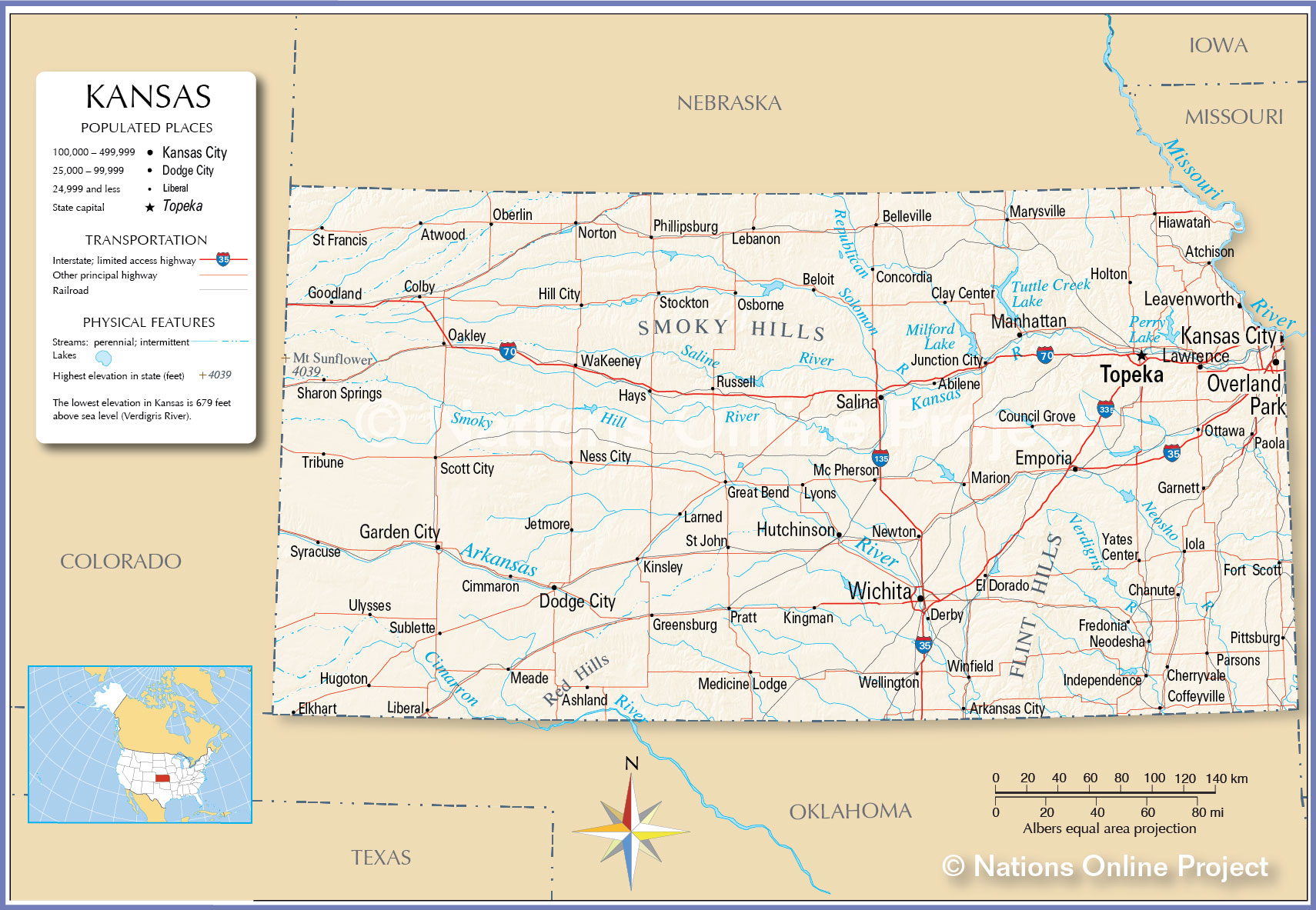
2. **Kansas: The High Cost of Child Care and Persistent Crime Concerns**Moving to number nine on our list, we head to the Sunflower State, Kansas, where quality of life challenges are particularly felt by families and communities. One of the most significant hurdles for Kansans is the sparsity and expense of child care. Child Care Aware of America reports that there are just 825 licensed child-care centers for a state with 2.9 million people, a stark indicator of a system struggling to meet demand. This scarcity drives up costs, making it a substantial financial burden for many.
Indeed, child care in Kansas is among the most expensive in the nation. A married couple earning a median income can expect to spend nearly 14% of it solely on child care expenses. This is a staggering proportion of a family’s budget, limiting financial flexibility and often forcing difficult choices for working parents. Such high costs can significantly impact a family’s overall economic well-being and ability to thrive.
And don’t let the idyllic prairie imagery completely fool you; Kansas also grapples with significant crime issues. FBI figures show that Kansans reported over 11,000 violent crimes in 2022. While the state’s crime rate has recently started to decline after almost a decade on the rise, it still remains more violent than the national average. Despite strengths in health care and reproductive rights, these weaknesses in child care, crime, and worker protections culminated in Kansas receiving a 2024 Quality of Life Score of 113 out of 325 points, resulting in an ‘F’ Top States Grade.
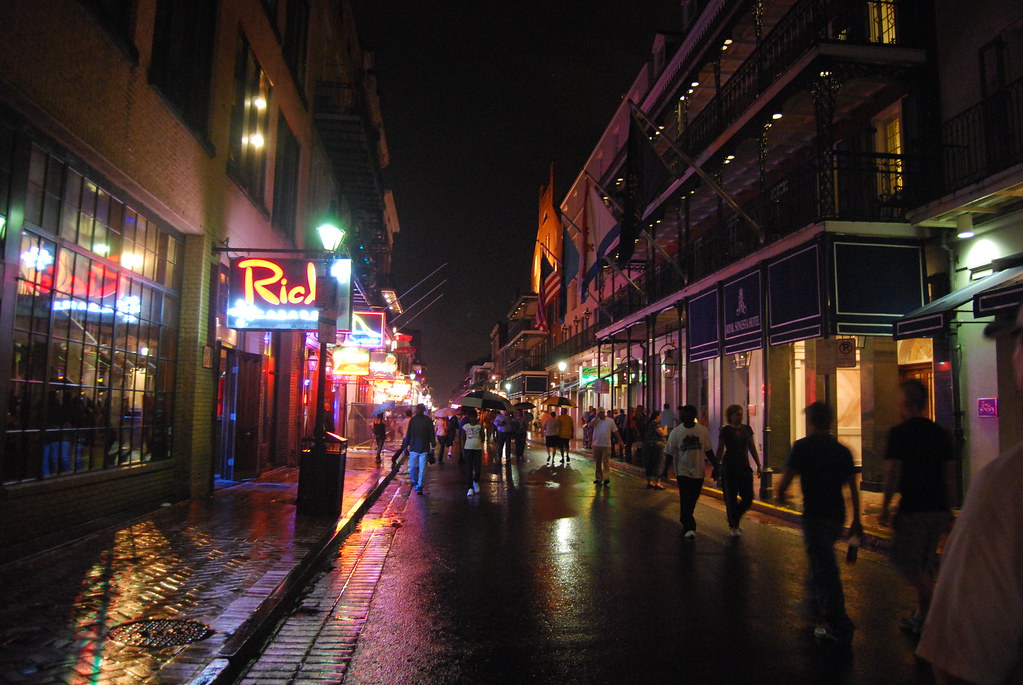
3. **Louisiana: Navigating High Crime, Poor Health, and Reproductive Rights Challenges**At number eight, we find Louisiana, a state where residents often pride themselves on their resilience, and perhaps with good reason. The Pelican State faces some formidable quality of life obstacles, particularly when it comes to public safety and health. According to FBI statistics, Louisiana unfortunately holds the fourth-highest violent crime rate in the nation, including over 300 murders reported in 2022. This high incidence of violent crime significantly impacts residents’ sense of security and overall community well-being.
Beyond crime, Louisiana is also grappling with profound health challenges. The United Health Foundation identifies it as America’s least healthy state, burdened by the fourth-highest rate of premature deaths. A concerning statistic reveals that more than 40% of Louisianans are obese, pointing to widespread public health issues that contribute to a lower quality of life. These health metrics illustrate a state where comprehensive public health initiatives are desperately needed.
However, it’s not all challenging news for Louisiana. The state stands out as a leader in child care, boasting more than 1,800 licensed facilities for its 4.5 million people, as per the Louisiana Department of Education. This strong showing in child care is a notable strength that provides crucial support for families. Despite this positive, the pervasive issues of crime, health, and reproductive rights led to Louisiana’s 2024 Quality of Life Score of 100 out of 325 points, also an ‘F’ Top States Grade.
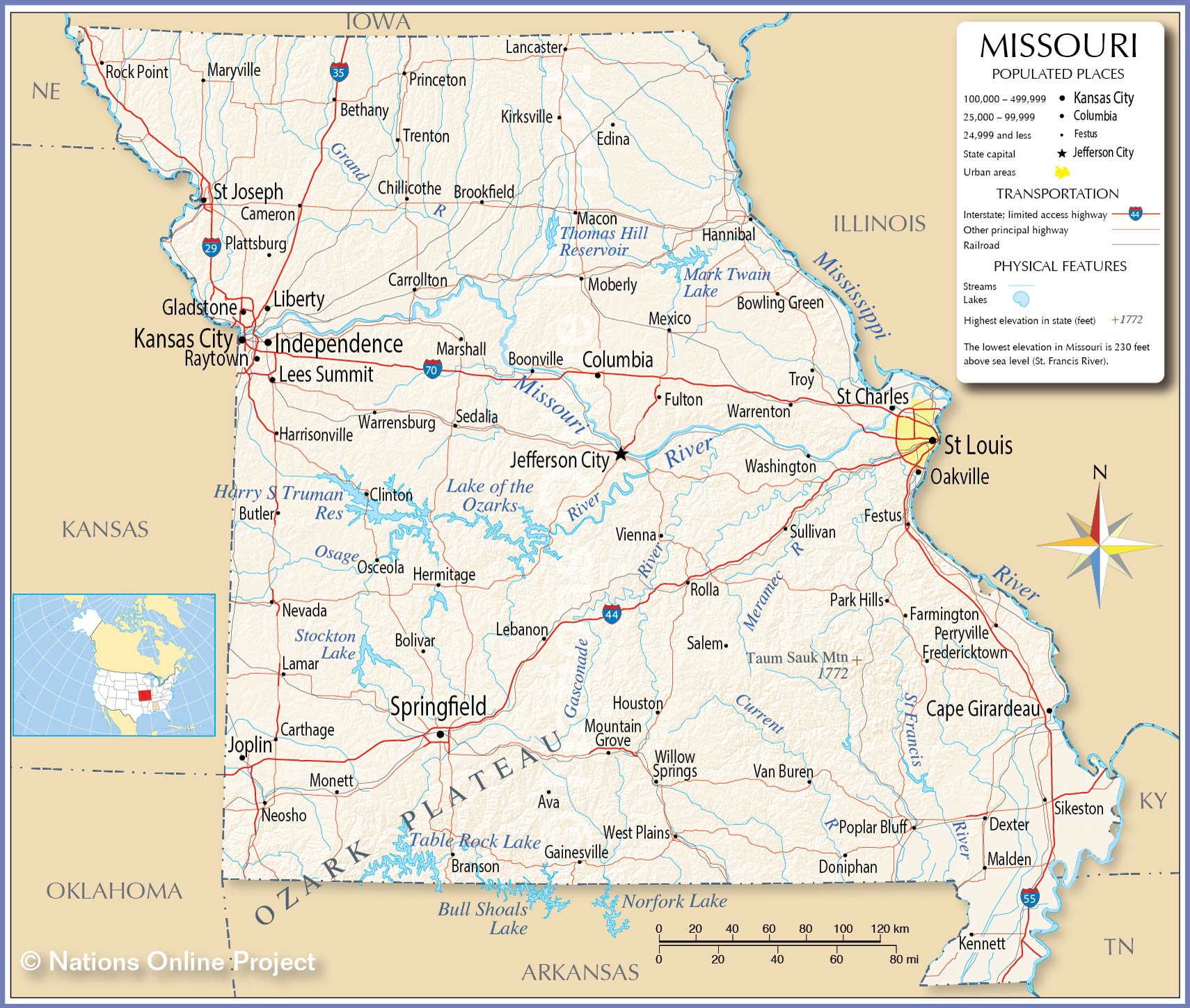
4. **Missouri: The Burden of Voting Rights and Persistent High Crime Rates**Sliding into the seventh spot on our list is Missouri, a state where the ease of civic participation and public safety are significant concerns for its residents. During the tumultuous Covid-19 pandemic in 2020, Missouri was notably one of the last states to finally permit early and mail voting. This hesitancy highlights a broader trend: the state remains one of the most burdensome places to vote in the country, according to elections researcher Michael Pomante’s ‘Cost of Voting Index’.
Further complicating civic engagement, Missouri is one of only ten states that still requires a qualified excuse for citizens to vote by mail. These restrictions can significantly disenfranchise segments of the population, making it harder for people to exercise their fundamental right to vote and engage with their democracy. Such policies contribute to a feeling of reduced personal freedom and accessibility for many residents.
On the public safety front, Missouri also contends with America’s sixth-highest crime rate, with over 30,000 offenses reported in 2022. This high crime rate understandably impacts the safety and security of communities across the state, adding to the overall challenges in quality of life. While the state does offer a strength in air quality, its weaknesses in voting rights, crime, and reproductive rights resulted in a 2024 Quality of Life Score of 98 out of 325 points, yet another ‘F’ Top States Grade.

5. **Tennessee: Grappling with Crime and a “Tsunami” of Inclusiveness Issues**Coming in at number six, we turn our attention to the Volunteer State, Tennessee, where a mix of public safety and social inclusiveness issues significantly impact its quality of life ranking. While the Tennessee Bureau of Investigation indicates a decline in violent crime, including a nearly 9% drop in the murder rate in 2022, the state still unfortunately ranks among the most violent in the nation, according to FBI crime statistics. This ongoing challenge affects residents’ daily lives and sense of security.
However, it’s the state’s stance on inclusiveness that really raises red flags. The Human Rights Campaign has alleged that Tennessee lawmakers unleashed “a tsunami of discriminatory legislation” in 2024. One particularly concerning law, signed by Republican Governor Bill Lee in April, forbids the state social services department from seeking to place LGBTQ+ foster children in supportive homes, directly impacting the well-being and safety of vulnerable youth.
Another piece of legislation in Tennessee clears the way for the state to abolish its independent human rights commission, instead folding it into the partisan Attorney General’s office. Such moves are seen as undermining protections against discrimination and reducing accountability, fostering an environment where certain populations may feel less safe and valued. Despite strengths in child care and air quality, these profound weaknesses in crime, inclusiveness, and health care contributed to Tennessee’s 2024 Quality of Life Score of 96 out of 325 points, leading to an ‘F’ Top States Grade.
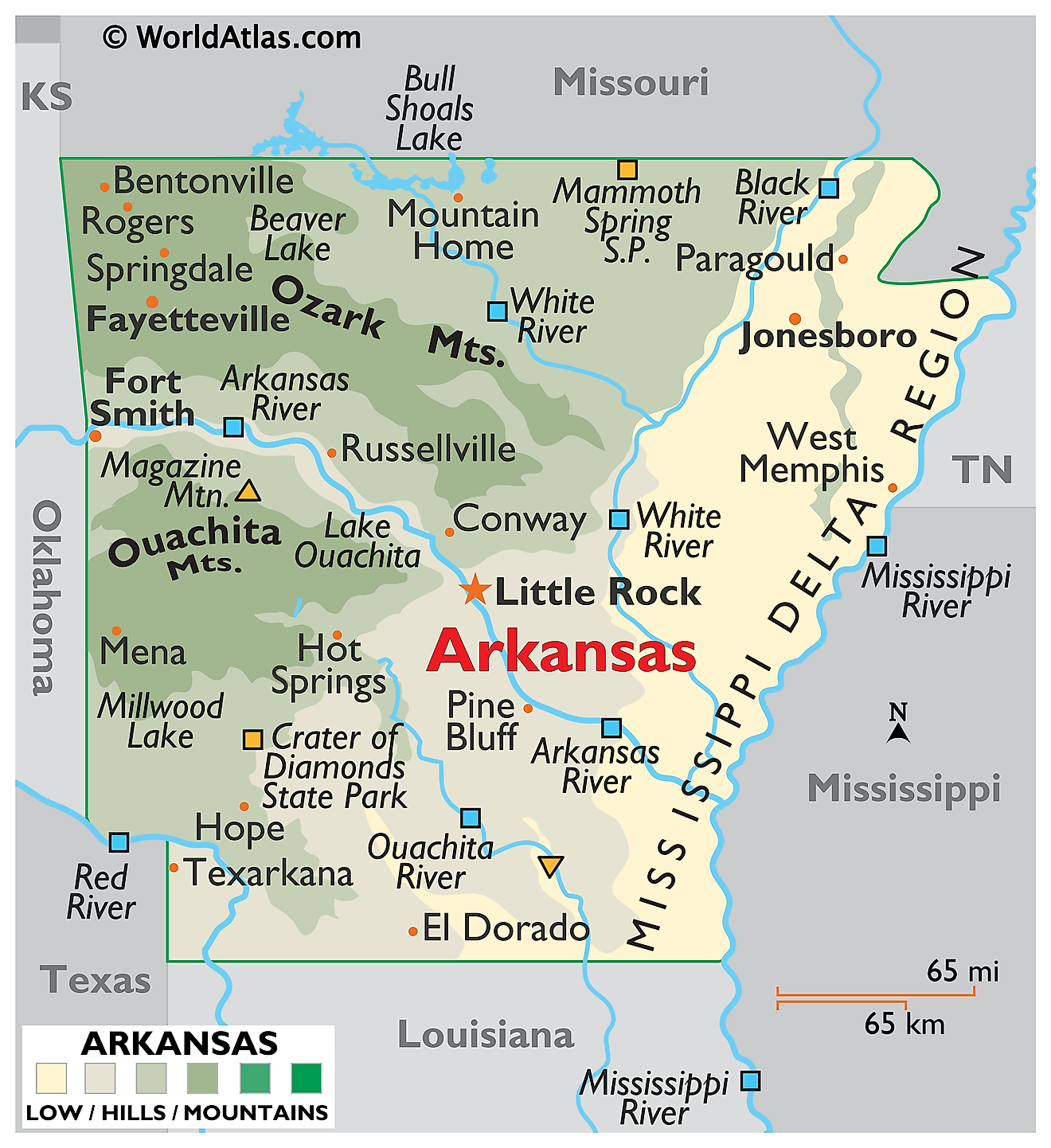
6. **Arkansas: The Natural State’s Dangerous Side**Alright, buckle up, because we’re officially in the top five least happy states! Coming in at number six on our list – which means it’s the fifth unhappiest state overall – is Arkansas, often celebrated as “The Natural State.” But beneath its picturesque facade, residents are wrestling with some truly tough quality of life issues.
Let’s talk public safety first. Arkansas unfortunately holds the unenviable position of having the second-highest violent crime rate in the entire nation, trailing only New Mexico. This isn’t just a statistic; it profoundly impacts the daily lives and sense of security for everyone living there, making simple routines feel a lot less ‘natural’ and a lot more concerning.
Adding to these challenges are significant weaknesses in inclusiveness. The National Conference of State Legislatures highlights that anti-discrimination provisions in Arkansas’s public accommodation law are notably weak. This means there are no legal protections against discrimination based on age, veteran or military status, pregnancy, ual orientation, or marital status, leaving broad segments of the population potentially vulnerable.
However, it’s not all grim news! Arkansas genuinely shines as a leader in affordable child care. For married couples earning a median income, they can expect to pay just 9% of their earnings on child care, which is a major relief compared to many other states. Plus, with nearly 1,800 licensed child-care facilities for a state of about three million people, access is notably better here. Despite this crucial strength, the pervasive issues of inclusiveness, crime, and voting rights ultimately contributed to Arkansas’s 2024 Quality of Life Score of 93 out of 325 points, earning it an ‘F’ Top States Grade.
Read more about: I’ve Been to All 50 States: These 14 Are the Underrated Gems You Absolutely Need to Explore Now
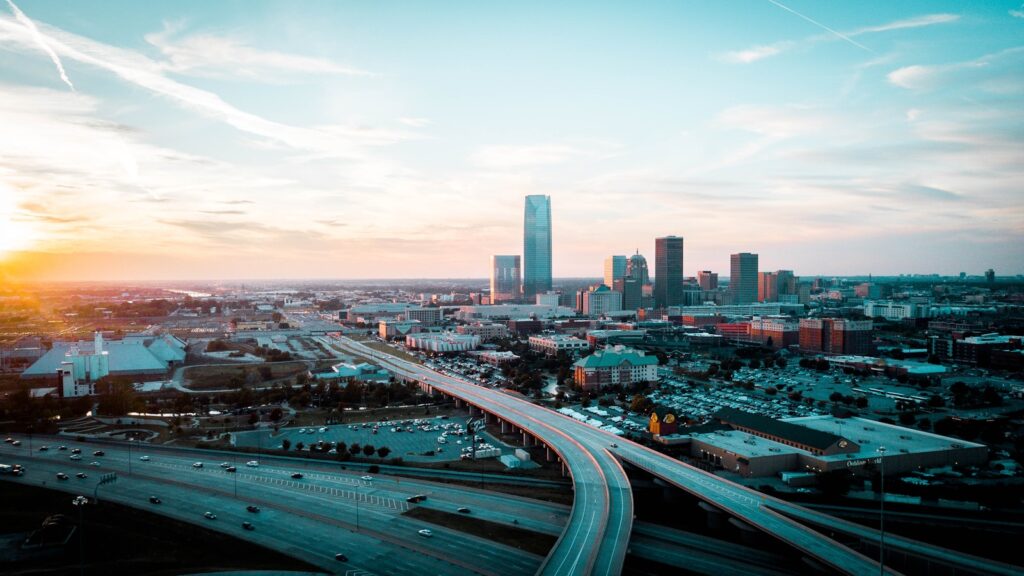
7. **Oklahoma: Restrictive Rights and Health Struggles**Next up, at number seven on our ‘unhappiest’ countdown (making it the fourth most challenging state for quality of life) is Oklahoma, affectionately known as the Sooner State. Here, the profound challenges really hit home, especially concerning deeply personal freedoms and public health.
Reproductive rights in Oklahoma are among the most restrictive across the entire nation, a direct consequence of the Supreme Court’s 2022 Dobbs decision. The Guttmacher Institute points out that the state’s abortion ban prohibits abortions at any stage of pregnancy. The only narrow exceptions are in cases of rape or incest, or if the procedure is absolutely necessary to save the life of the mother, leaving many residents with severely limited options.
Beyond these critical personal freedoms, Oklahoma also struggles significantly with health outcomes. The state is burdened with the nation’s third-highest obesity rate, which is a major public health concern. Compounding this, Oklahomans also report the third-lowest rate of physical exercise, painting a picture of a state grappling with widespread lifestyle-related health challenges that contribute to a lower overall quality of life for its citizens.
These combined health issues firmly place the Sooner State among America’s least healthy. While Oklahoma does show a strength in air quality, its severe weaknesses in reproductive rights, health, worker protections, and voting rights led to a 2024 Quality of Life Score of 85 out of 325 points, earning it another ‘F’ Top States Grade. It’s clear that while the air might be clean, other vital aspects of life are proving to be quite difficult for residents.
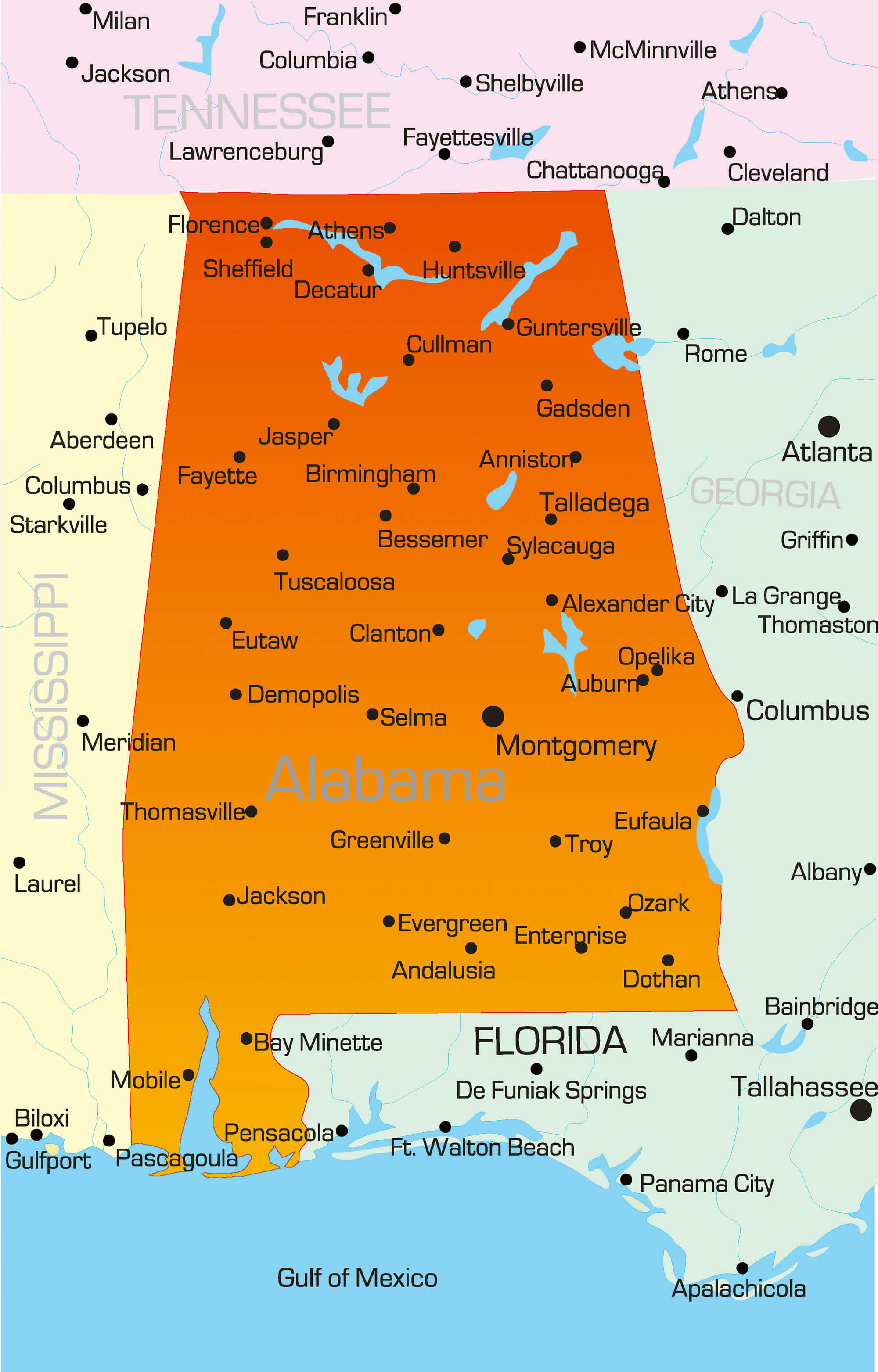
8. **Alabama: Voting Hurdles and Low Wages**Sliding into the eighth spot on our list (and the third unhappiest state overall) is Alabama, the Yellowhammer State. While known for its rich history and Southern charm, Alabama presents some stark realities when it comes to fundamental civic participation and economic well-being, hitting residents hard where it counts.
First, let’s talk about casting a ballot. Alabama stands as one of only three states in the entire nation that does not allow early voting, according to The Center for Election Innovation and Research. As if that wasn’t challenging enough, this year saw the state pass significant new restrictions on absentee voting, further complicating the process for citizens to exercise their democratic rights.
The economic picture in Alabama also reveals significant struggles, particularly concerning worker protections and wage policies. Oxfam America critically ranked the Yellowhammer State dead last for its wage policies. The state’s minimum wage of $7.25 per hour barely scratches the surface, covering less than a mere 20% of the cost of living for a family of four, making economic stability a distant dream for many.
And when it comes to inclusiveness, Alabama is one of only five states lacking a public accommodation law that bars discrimination against non-disabled people. This absence of legal safeguards against discrimination creates an environment where certain populations may feel less protected and valued. Despite a notable strength in child care, these deep weaknesses in voting rights, inclusiveness, and worker protections culminated in Alabama receiving a 2024 Quality of Life Score of 83 out of 325 points, resulting in yet another ‘F’ Top States Grade.
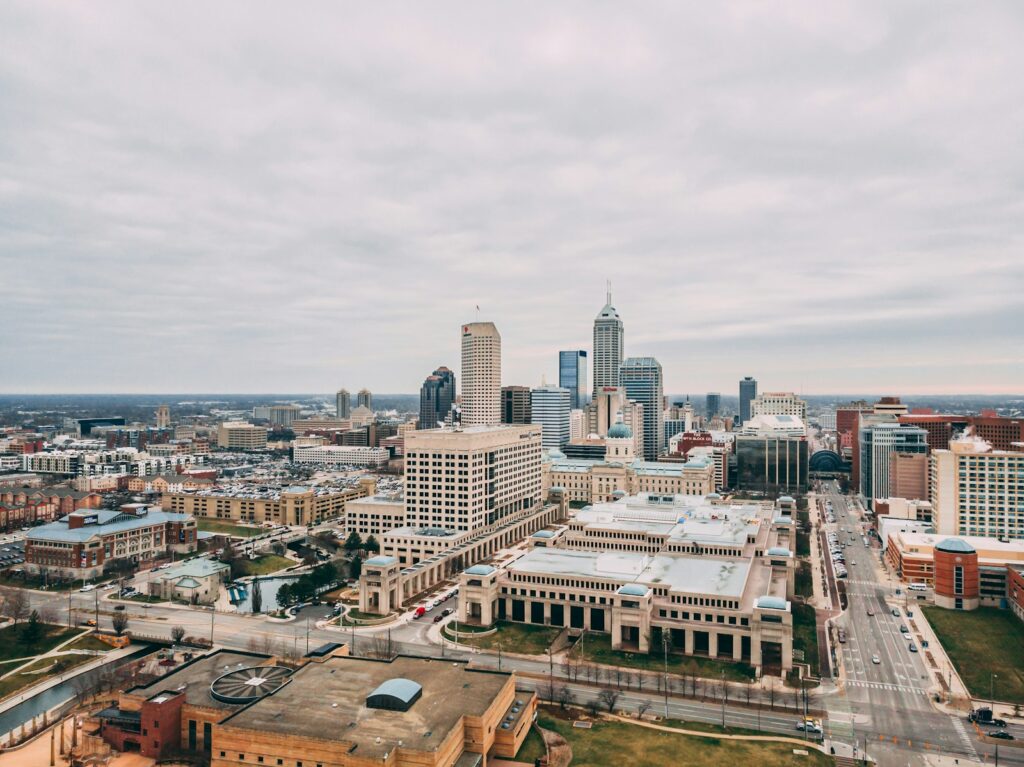
9. **Indiana: Child Care Crisis and LGBTQ+ Challenges**Next up, securing the ninth spot on our list (making it the second unhappiest state for quality of life) is Indiana, the Hoosier State. This state faces some incredibly pressing issues, particularly impacting families and marginalized communities, making everyday life a strenuous challenge for many residents.
Indiana is facing what can only be described as a child care crisis, unfortunately ranking as the worst state in the nation for access to child care. With just 772 licensed facilities available for a population of nearly seven million people, the supply simply cannot meet the overwhelming demand. This severe scarcity directly translates into child care being incredibly expensive, with a married couple typically spending nearly 13% of their median income on these essential services, a heavy burden for working families.
Compounding these family-centric struggles are significant concerns regarding inclusiveness. Indiana has unfortunately joined a growing number of states in passing laws that explicitly target the LGBTQ+ population. This includes a ban on gender-affirming care for minors, which directly impacts the well-being of vulnerable youth. Furthermore, new legislation bars teachers from discussing human uality from pre-kindergarten through third grade, raising concerns about creating an unwelcoming and unsupportive environment for many.
These legislative actions are seen by many as undermining protections and fostering an atmosphere of discrimination for certain populations. While Indiana does offer a strength in crime, its profound weaknesses in child care access, reproductive rights, inclusiveness, and voting rights led to a 2024 Quality of Life Score of 78 out of 325 points, resulting in an ‘F’ Top States Grade. It’s clear that despite some positive aspects, fundamental quality of life elements are sorely lacking for many Hoosiers.
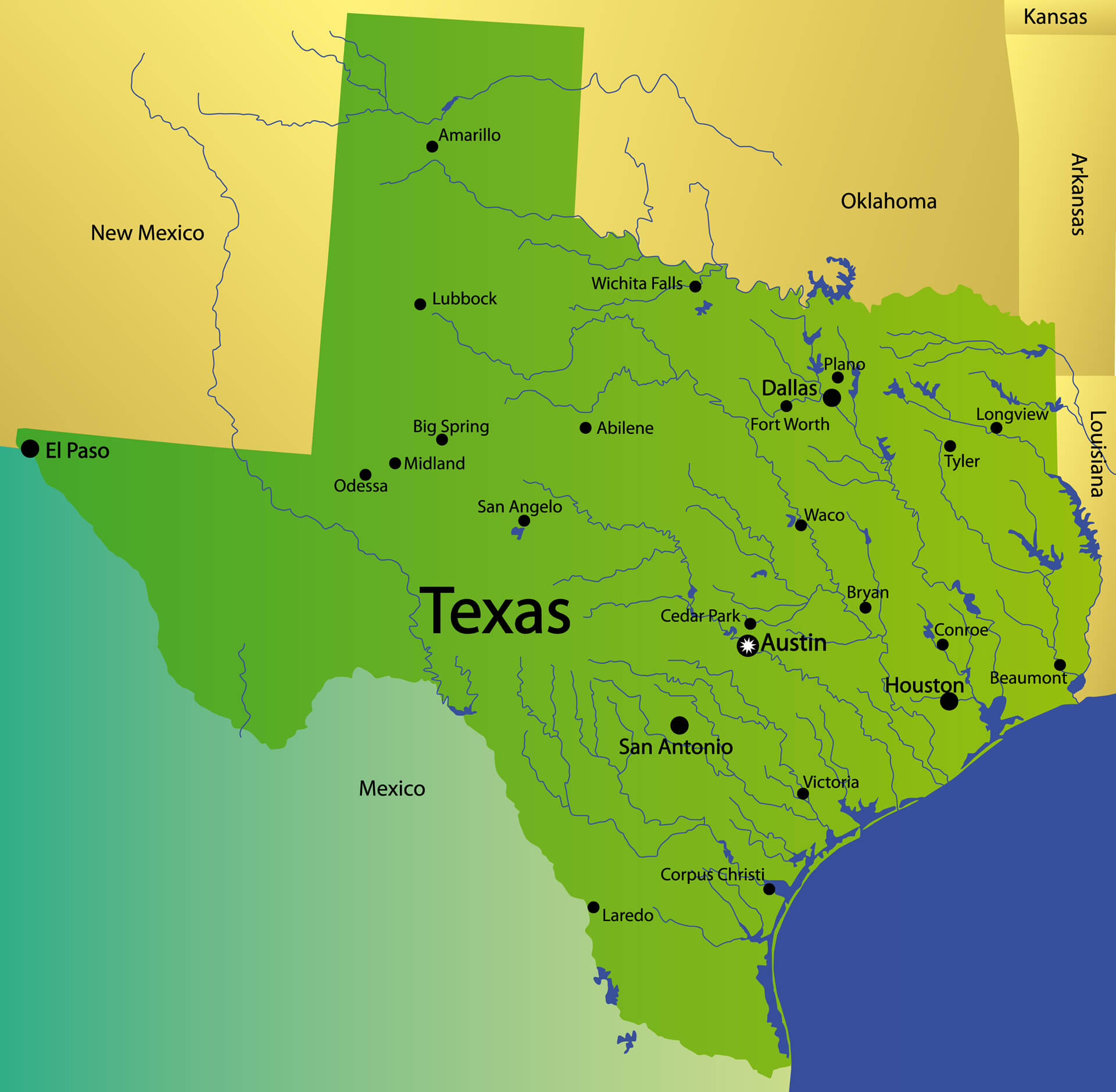
10. **Texas: The Lone Star State’s Livability Paradox**And now, for the state with the lowest Quality of Life score in the entire nation, claiming the tenth spot on our unhappiest list (and the undisputed number one worst state to live and work in): Texas! We know what you’re thinking – “But people are flocking to Texas!” And you’re absolutely right; according to the Census Bureau, some 220,000 educated workers alone moved there in 2022. It’s a true paradox that demands a closer look.
However, the sheer volume of new residents doesn’t negate the serious livability issues that the data consistently highlights. People move for diverse reasons, but once they arrive, many are encountering significant challenges. Take health care, a basic necessity, for instance. Texas ranks near the bottom in primary care providers per 100,000 residents, with only 182, as reported by the United Health Foundation.
Even more startling, The Commonwealth Fund reveals that Texas leads the nation—by far—in residents without health insurance. And a staggering 19% of all people with a credit score in Texas are burdened with medical debt that has gone to collections, painting a grim picture of health care accessibility and financial strain for many.
Furthermore, new Texans often find very few protections embedded in the law. Texas is another state that lacks a public accommodation law explicitly barring discrimination against non-disabled people. It has also passed a barrage of laws targeting the LGBTQ+ community, and its abortion ban stands as the strictest in the entire nation, severely limiting personal autonomy and rights. For those who might face economic hardship, the safety nets are notably weak: Oxfam America reports that state unemployment benefits cover less than 10% of the average cost of living.
While there are anecdotal accounts of people leaving the state specifically over its restrictive policies, the statistical reality, for now, is that people continue to pour into the state with America’s worst quality of life. Despite its rapid growth, Texas received a 2024 Quality of Life Score of 75 out of 325 points, and unsurprisingly, an ‘F’ Top States Grade. It’s a stark reminder that popularity doesn’t always equal prosperity for all residents.
**The Bottom Line: A Call for Change and Better Living**
There you have it—a sobering look at the ten states where quality of life metrics are struggling the most. It’s clear that while economic growth might attract new residents, the true measure of a state’s success lies in the well-being and happiness of its people. From pervasive crime and inaccessible healthcare to restrictive personal freedoms and inadequate worker protections, these states face profound challenges that demand urgent attention. Understanding these issues isn’t just about rankings; it’s about advocating for the changes that can truly make every state a great place to live, work, and thrive. Let’s hope to see these numbers shift for the better in the years to come, because everyone deserves a place where they can truly flourish.



